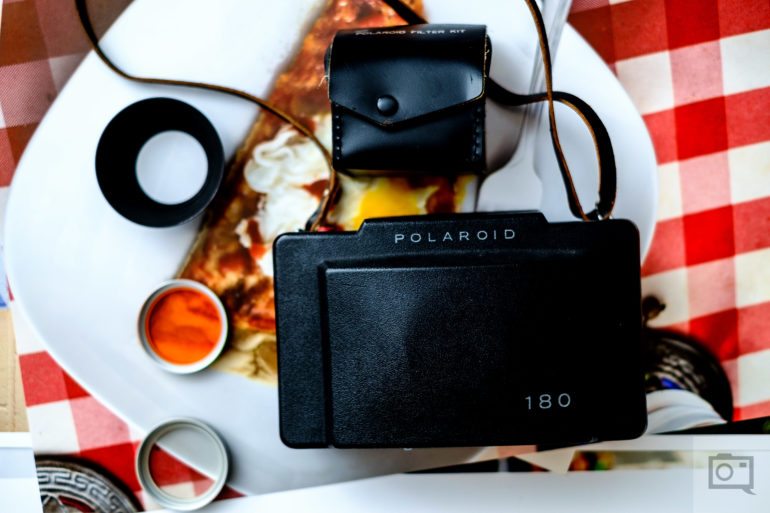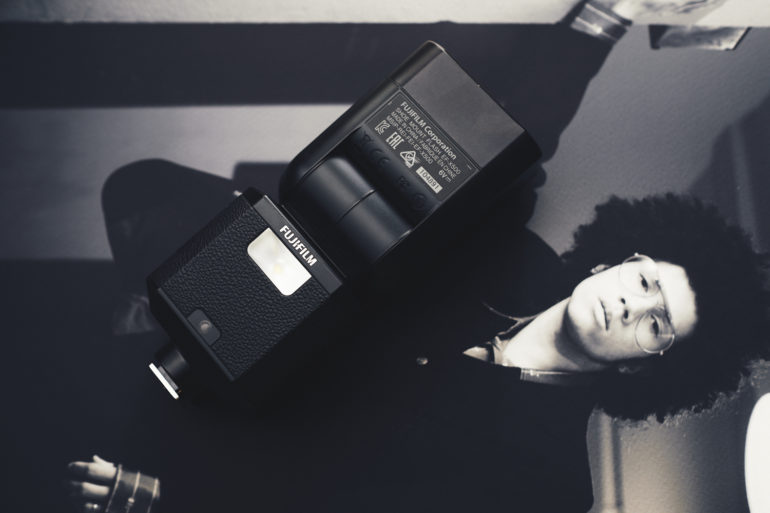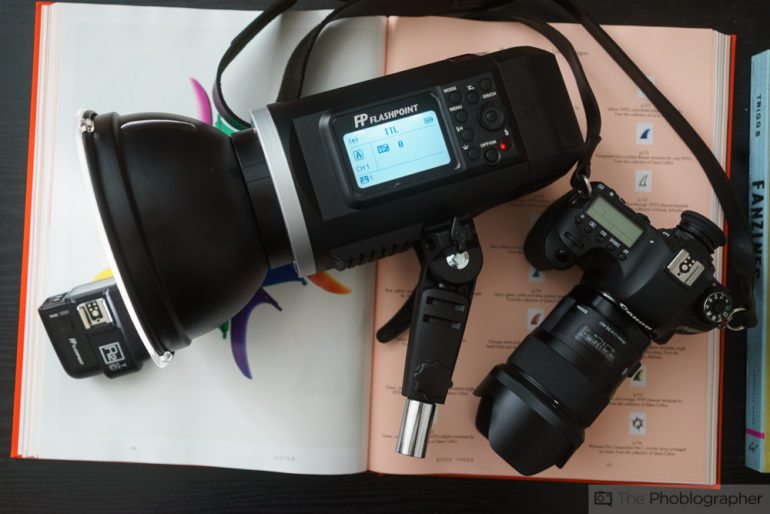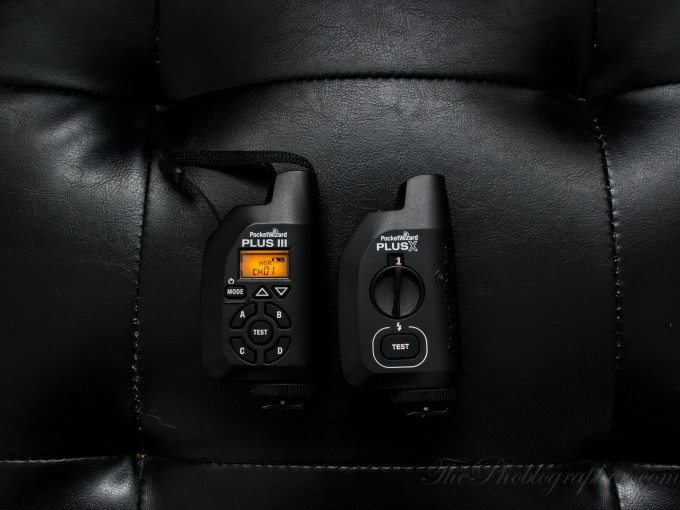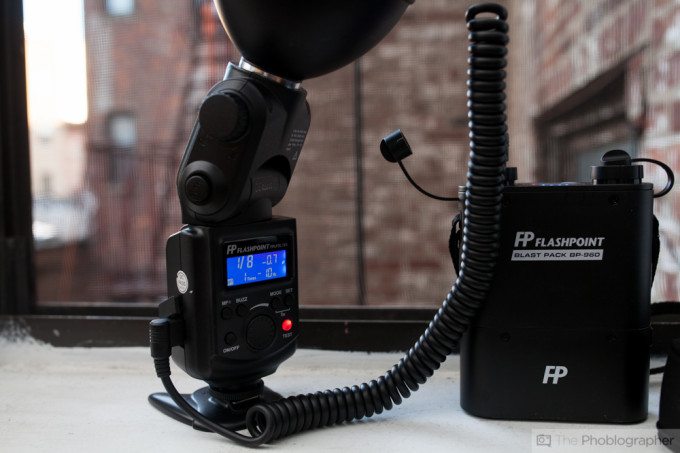Last Updated on 10/20/2017 by Chris Gampat
Like many photographers, I worked for a time as an assistant in a studio, where one of my most important tasks was to follow behind (or in front of, or beside) the photographer and make sure they didn’t trip over their PC cable, thereby unplugging the lights while simultaneously falling unceremoniously on their face.
A remnant of the same era where telephone operators manually plugged cables into long rows of connectors to complete a call, the PC connector is a long cord that attaches between the camera and a flash or strobe setup. The PC has always been a problematic solution. On one side is usually found a connector that’s the same as a 3.5mm headphone mini-connector, while on the other side is a coaxial cable comprised of an inner cable wrapped in a thin circular metal housing. The circular coaxial end of the cable plugs into a camera’s PC port, and the 3.5mm cable plugs into a lighting pack. Multiple packs could be strung together by a series of cables, and photographers needing a lot of space between themselves and their packs would often combine multiple extenders and drag the cables behind them.
PC cables were always the bane of a photographer’s shoot. The cables would often fall out of the slot on the front of the camera, landing underfoot, only to be crushed by a heel. Many photo shoots were put on hold while a PC cable housing was bent back into shape. Even when the connections seemed good, they’d still occasionally fail to sync.
An interesting bit of trivia: The PC cable stands for Prontor-Compur, the name of two brands of photographic leaf shutters in the 1950s. Both companies were partially owned by Zeiss, which is one of the reasons why a common connection standard was devised—making two systems communicate together makes both of them more compatible.
Despite its shortcomings, the PC cable slot is still found on camera bodies today, partially because of their ubiquity. They’re the lowest common denominator in lighting connectivity. Most pro cameras, pro lighting packs and pro flash systems have a PC cable port.
The complicated mechanical arrangement of the PC cable is why lighting systems, particularly on-camera flash, started to move to wireless triggering systems years ago. Today’s wireless flash systems provide countless benefits, from long-distance triggering to multiple unit control as well.
Optical Pathways
Nikon really popularized the idea of wireless flash photography with the introduction of its Advanced Wireless Lighting system in 2003. Though it was far from the first to allow for remote triggering of lights, it successfully integrated this into its Nikon-branded flash systems, allowing for multiple lights to be triggered with a single commander unit, all of which would meter properly through the DSLRs and film SLRs of the time. In fact, the wireless functionality of Nikon’s strobe system was one of the biggest draws for wedding and portrait photographers to the platform over the Canon system, which didn’t get wireless flash control until the 2010 release of the ST-E2 transmitter.
I remember being at a workshop in the 2000s where some Sports Illustrated photographers used multiple wireless Nikon flashes in an Olympic swimming pool facility to trigger a battery of lights in order to freeze action in the pool. It would have been virtually impossible to run cables around the deck of the pool to achieve the same shots with a wired setup. At the time, it was pretty mind-blowing.
The early Nikon system, and the later Canon wireless systems, used optical signals to trigger remote flash units. A main unit would send out an IR pulse that would be received by the slave units, triggering them. While this was similar to the optical slave systems built into studio packs, having this controlled via one TLL flash allowed the main camera to meter automatically, eliminating the need to guess about flash durations.
The downside to using optical signals to trigger lights is these systems don’t work in many common shooting situations. Place a subject between the primary flash and a secondary flash, obscuring the view of the first flash, and it’s not possible to trigger the second flash. While the IR signals travel at the speed of light, they have the same inverse-square rules that affect the light coming from the strobe itself. Doubling the distance from an IR transmitter to a receiver reduces the intensity of the incoming signal by 25 percent, so over long distances there’s not a “bright” enough IR pulse to send to be received by the slave flash.
Harsh sunlight is also notorious for “blinding” the sensors on the slave units, sending so much IR light in their direction that they can’t distinguish the incoming pulses from background noise. While photographers could solve some of these issues by stringing multiple repeater units around a space, the overall difficulties with optical systems, combined with advances in radio transmission, has made them largely a thing of the past.
Radio Hero
Long before Nikon or Canon integrated optical wireless flash transmission into their products, third-party products had already tackled the issue, and they did so using a much more robust technology: radio waves.
Popularized by PocketWizard, these radio-powered remote triggers were the staple of any location photographer’s bag. Original units were very basic, offering only triggering of lights, but these grew to be much more powerful, and many studio systems began integrating PocketWizard or similar systems into their packs, giving studio flash systems as much (or more) flexibility as portable strobes.
There are some key advantages to using radio-based control over flash systems, most notably the way that radio waves behave around objects. While both light and radio signals are electromagnetic waves, different things are “transparent” to them; or, in other words, different things stop these different waves in their tracks. Radio waves travel through fabric, many walls and plenty of objects, as anyone who uses a cell phone or has listened to radio has observed.
While both light-based and radio-based systems are governed by the inverse-square law, the signal coming from radio waves can be much stronger to start with, giving it a greater range before the signal fades; combine this with the ability to penetrate “solid” objects, and radio transmitters are clearly the right choice for most photographic environments.
As wireless systems have matured, they’ve gained additional features. Most wireless strobe systems not only can trigger remote flashes but control them as well. Using a single interface, it’s possible to dial in settings for a dozen or more lights, in several groups. This tends to work better with radio-based wireless as well, since each setting change has to be sent as a separate signal, and radio signals are more likely to get to their intended flashes.
This is especially important for the wedding, event and sports photographer, who can use wireless technology and lightweight strobe systems to create different lighting scenes and solutions and adjust them on the fly.
Commander On Deck

With the flash-based solution, photographers have the benefit of having a camera-mounted light, perfect for most lighting situations. It’s easy to create fill-flash or accent lighting using a primary light on-camera and one or more off-camera lights.
The obvious issue comes when a photographer doesn’t need an on-camera light. A sports photographer, triggering wireless lights in a venue, might never need a primary light. It’s possible with most systems to set the primary flash to not fire, but toggling between firing and not is a big hassle, especially during a busy shoot. Most photographers using wireless flash systems should consider buying at least a two-light kit, along with the appropriate remote commander unit.
Wireless Solutions
Most of the manufacturers now have wireless radio flash systems, although with a mix of features and functionality. Wireless settings and triggering aren’t only the domain of the flash units, as a variety of monolights and studio systems have their own wireless triggering system or use one of the common triggers, like PocketWizard.

Third-party flash systems abound, with two main types of units available: dedicated strobes and add-on commanders. Most dedicated systems are designed to work with the TTL systems in a particular camera model—a Sony model wouldn’t also do TTL on a Canon—while a few provide flash triggering but not TTL metering.
Metz, Nissin, Yongnuo, Phottix, Quantum, Sunpak and others make third-party flash systems, available for a variety of camera manufacturers. The bargain-basement pricing of some of these systems tends to scare people off, but we’ve had good results with some of them. A test Yongnuo flash (less than $100) provides most of the same features of the manufacturer flash systems, but at a fraction of the price. More expensive units often have more features and faster recycle times, which are both important considerations in a flash system.
It’s also possible to use non-wireless flash units with a wireless triggering system, thanks to transceivers that attach to the hot-shoe connection of a flash. The transceiver receives a signal from the on-camera control unit, and in turn, fires the attached flash.
Many monolights and studio packs also work with remote triggers, either their own or third-party devices. Profoto lights, for example, use the company’s AirTTL transmitters and receivers to control both monolights and packs, elinchrom uses its Skyport system, and these companies as well as Dynalite and others have PocketWizard support built in.
It’s also possible to purchase a dedicated triggering system like PocketWizard or Paul C. Buff CyberSync to trigger both studio and portable flash systems, as long as those systems have a PC cable connector, 3.5mm jack or there’s a compatible triggering cable available. PocketWizard supports more than 10 camera systems and dozens of lighting manufacturers either directly or via cables for the dedicated systems.
Many photographers are already shooting with wireless flash systems without knowing it. Most of the camera manufacturers include remote triggering in their flash units, so all that’s necessary is a second flash system to take advantage of the wireless world.
While the PC cable was a crucial step in integrating camera and flash systems, wireless options are vastly more useful, and they open up a world of portable flash solutions to any photographer willing to unplug.
This is a syndicated blog post from Digital Photo Pro. It and the contents here are being republished with permission through the Madavor Network.



